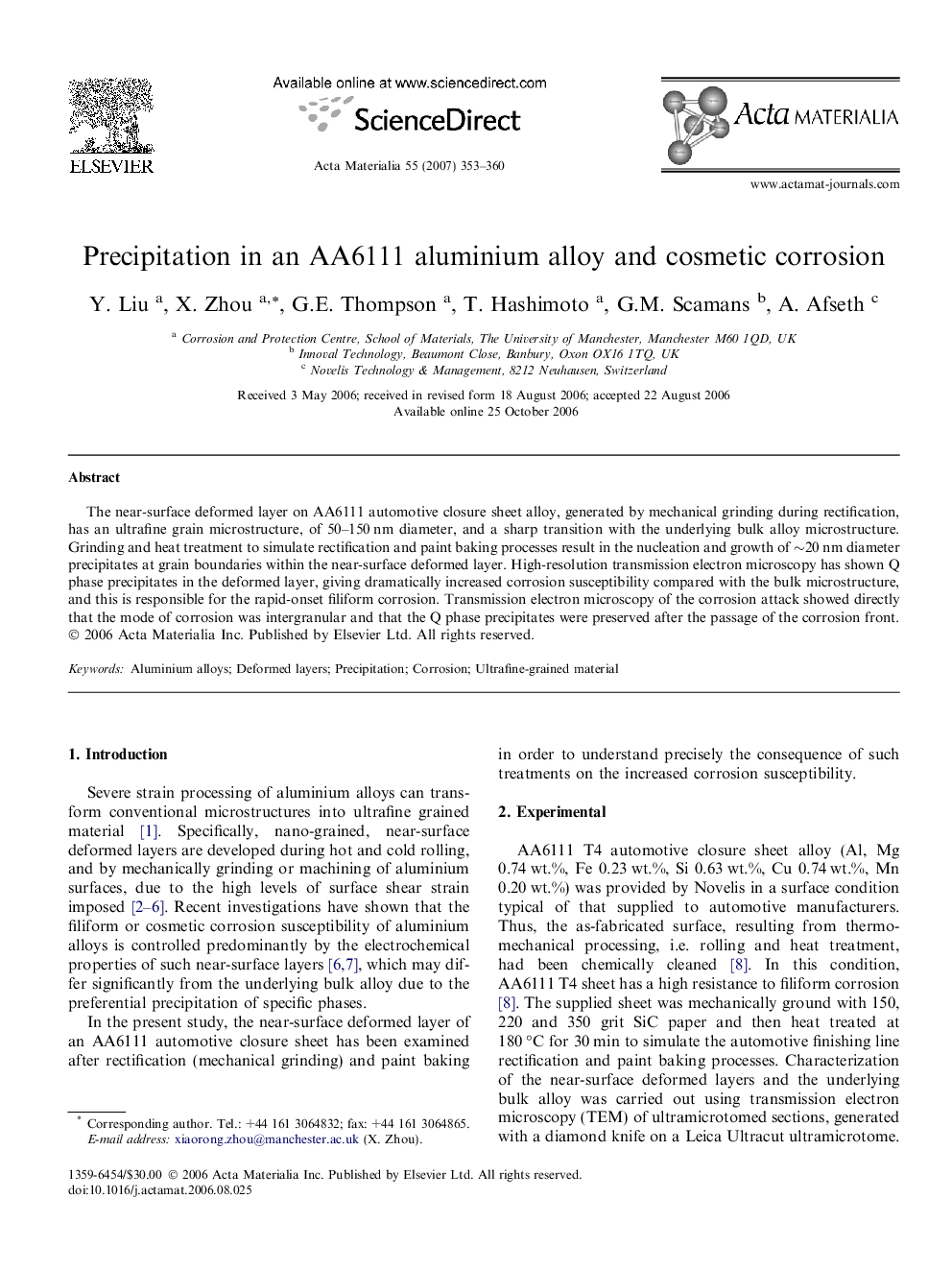| Article ID | Journal | Published Year | Pages | File Type |
|---|---|---|---|---|
| 1449918 | Acta Materialia | 2007 | 8 Pages |
The near-surface deformed layer on AA6111 automotive closure sheet alloy, generated by mechanical grinding during rectification, has an ultrafine grain microstructure, of 50–150 nm diameter, and a sharp transition with the underlying bulk alloy microstructure. Grinding and heat treatment to simulate rectification and paint baking processes result in the nucleation and growth of ∼20 nm diameter precipitates at grain boundaries within the near-surface deformed layer. High-resolution transmission electron microscopy has shown Q phase precipitates in the deformed layer, giving dramatically increased corrosion susceptibility compared with the bulk microstructure, and this is responsible for the rapid-onset filiform corrosion. Transmission electron microscopy of the corrosion attack showed directly that the mode of corrosion was intergranular and that the Q phase precipitates were preserved after the passage of the corrosion front.
